I’m not sure why it never occurred to me till now to write an annual review of non-fiction first editions published by Black authors. After all, my film Blacktrospective has proven to be a popular feature. Maybe my reservation in terms of print had to do with the fact that only a fraction of the people invest in a best seller compared to the millions who run out to see a movie.
Regardless, as a voracious speed reader, I’ve covered considerable literary ground over the past 12 months. So, I’ve compiled a list of my personal favorites which cut across all genres, ranging in focus from the academic to art to self-help to history to cooking to tell-all to politics to sex to memoir. Just to prove that I’m no easy mark, I’ve also taken the liberty to include my infuriating foursome, a quartet of equally-disappointing offerings.
 1. Confessions of a Video Vixen by Karrine Steffans 1. Confessions of a Video Vixen by Karrine Steffans
When I first interviewed Karrine Steffans a few years ago, I remember being very impressed by the neverending string of celebrity names she dropped during the course of our conversation. The then unknown actress, who was making her screen debut in A Man Apart opposite Vin Diesel, never let on exactly what she had done to make it in Hollywood.
Confessions of a Video Vixen, the most revealing groupie expose I’ve ever encountered, is a book I defy anyone to try to put down. The book ought to be mandatory reading for any starry-eyed, aspiring actress even thinking about heading to Hollywood. For if just half of the allegations and admissions contained in this spellbinding confession are true, I feel totally vindicated for all of my diatribes against gangsta rap as misogynistic, self-hatingand suicidal.
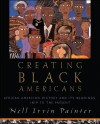 2. Creating Black Americans by Nell Irvin Painter 2. Creating Black Americans by Nell Irvin Painter
While I have studied straight history books and perused plenty of art books, I don’t remember ever coming across a comprehensive text which attempted to illustrate history exclusively with fine art. And I’ve certainly never seen such a tome devoted exclusively to African-Americana. Fortunately, this novel idea did come to Nell Irvin Painter, and that vision inspired her to execute the elegant Creating Black Americans: African-American History and Its Meanings, 1619 to the Present.
The book incorporates works from around 100 noted African-American artists, ranging from the readily recognizable Romare Bearden and Jacob Lawrence to the relatively obscure though no less deserving. In much the same way that gospel music stirs one’s soul, the passion of these endlessly inventive artists helps set the record straight about the Black experience in a profound way which mere words could never do. Enriching on several levels, Creating Black Americans is a masterpiece because it offers a deeper understanding of all the painful suffering and adversity endured by a proud and determined people while simultaneously bearing witness to a cultural legacy equally rich with strength, hope, and faith.
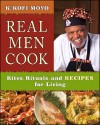 3. Real Men Cook by K. Kofi Moyo 3. Real Men Cook by K. Kofi Moyo
On Father's Day 1989, Yvette and Karega Kofi Moyo, parents of nine, invited neighborhood families to gather at their home in Chicago for a pot luck feast in order to shed light on some unsung heroes of the community, namely, all the ordinary, hard-working men who cared for their loved ones 365 days a year. Over the intervening decade and a half, that local event blossomed nationwide into an annual affair which simultaneously raises money for a variety of worthy charities like the YMCA and the the Boys and Girls Clubs of America.
Now, Kofi and company have published Real Men Cook, featuring a smorgasbord of recipes created by unsung heroes not only from the Windy City, but from African American neighborhoods all over the country. But as important as the succulent treats featured in this coffee table book's glossy, full-page photos are the corresponding tributes to the chefs shown sharing their culinary secrets.
I can’t personally vouch for any of these great-looking masterpieces, not having actually attempted to follow the instructions and whip any of them up. But that’s really besides the point, isn’t it, when it’s all for such a noble cause?
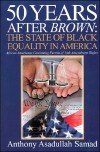 4. 50 Years After Brown by Anthony Asadullah Samad 4. 50 Years After Brown by Anthony Asadullah Samad
How far have we come in terms of realizing Dr. Martin Luther King, Jr.'s dream of a country where a person is judged not by the color of his skin but by the content of his character? Not far enough, according to Anthony Asadullah Samad, who sees the country not so much colorblind as blinded by color.
Although the Brown v. Board of Education case (1954) ostensibly overruled Plessy, Samad says that a focus on the dismantling of Jim Crow without devoting attention to remedies for the underlying attitudes, enabled racists to reinvent a more subtly oppressive social order which has not only still left Blacks at the bottom of the barrel, but which has increasingly blamed the victims of slavery for their ongoing plight.
Well-reasoned, painstakingly-researched, and extensively-annotated, 50 Years After Brown eloquently retraces the never-ending quest of African-Americans to partake of all this country has to offer as full-fledged citizens. As much an affirmation of the Black man’s humanity as it is an appeal to eradicate the last vestiges of a color-coded caste system instituted during the slave days.
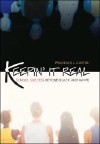 5. Keepin’ It Real by Prudence L. Carter 5. Keepin’ It Real by Prudence L. Carter
There has been an abundance of social scientists in recent years weighing in on the underachievement of minority students in America’s public schools. Generally, these pundits take one of two predictable stances, depending whether they’re on the left or on the right. The conservatives tend to say it’s the kids fault for capitulating to peer-pressures to not "act White," while liberals tend to see them as victims of a combination of societal ills.
Well, submitted for your approval is Keepin' It Real: School Success Beyond Black and White, a groundbreaking opus which turns both of these competing conventional wisdoms on their respective heads. Base on a study conducted by Prudence L. Carter, it makes quite a persuasive case that we ought to look at academic disengagement in a new way entirely.
Carter finds that Black and Latino children are failing, not because of lack of drive, desire or effort, but because they have essentially been devalued by elitist attitudes which, by design, rejects minorities on a cultural basis, delivering the harmful message that they simply don’t belong among the gifted pupils.
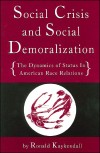 6. Social Crisis and Social Demoralization by Ronald Kuykendall 6. Social Crisis and Social Demoralization by Ronald Kuykendall
In this incendiary tome, Professor Ronald Kuykendall, à la WEB DuBois‘s notion of the Talented Tenth, calls upon the exceptional among the Black intelligentsia to forge a new political mindset. The revolutionary ideology he proposes is to be organized along class lines, and appears to stop just short of advocating armed struggle. This contemplated reform apparently relies heavily on bourgie blacks agreeing that they have been denied meaningful participation in this society.
While Social Crisis and Social Demoralization is undoubtedly one of the better-informed examinations of the subject of so-called race relations written in recent years, time will only tell whether or not the comfy class of African-Americans will heed the author’s clarion call to challenge the status quo.
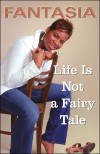 7. Life Is Not a Fairy Tale by Fantasia 7. Life Is Not a Fairy Tale by Fantasia
Fantasia Barrino was only 19 when people all across the country voted her the new American Idol in May of 2004. As a proud single-mom, she became an instant role-model for girls without much hope who found themselves in a similar predicament. And in this tell-all autobiography, she describes a life which has had more than its share of challenges.
Fantasia proceeds to explain, and rather clearly, exactly how she was misguided into imitating behaviors she saw in music videos, and why that was an inappropriate way of attracting a man. And she even warns young girls of the pitfalls of teen pregnancy, such as the fact that, "the cost of day care is more than a minimum-wage job earns."
|
|
Given its sincerity, its spirituality and its sobering message, Life Is Not a Fairy Tale is highly recommended for any at-risk teenagers with low self-esteem and in dire need of a reason for hope and of inspiration to keep the faith. For Fantasia makes a convincing case that if she could overcome all her obstacles, anybody else can, too.
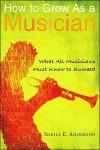 8. How to Grow As a Musician by Sheila E. Anderson 8. How to Grow As a Musician by Sheila E. Anderson
Over the years I have encountered a countless number of talented, but delusional, aspiring artists whose grandiose expectations about their prospective careers were woefully out of sync with the steps they were taking to get there. For instance, a common trait which seems to be shared not only by musicians, but by actors, dancers, and all sorts of young performers is that all they need to do is perfect their craft and they will somehow be magically discovered, appreciated, and catapulted to super-stardom.
Fortunately, Sheila A. Anderson puts that myth to bed once and for all in this most informative how-to book which ought to be required reading for every kid walking around with a head clouded by such a naïve dream. Anderson, a long-time host of both a television and a radio show devoted to jazz, tapped an array of her contacts in order to determine those traits shared by those on what she calls the A-team.
 9. Michael Jackson: The Man Behind the Mask by Bob Jones 9. Michael Jackson: The Man Behind the Mask by Bob Jones
In order to weather media storms successfully, any celebrity needs a good PR person who could carefully choreograph press and photo opportunities to their client's advantage. For over 34 years, Bob Jones was Michael Jackson's right-hand man. This brilliant publicist ran interference for his employer, always putting a good spin on whatever embarrassing predicament his boss found himself in, from being caught on camera canoodling with a boy, marrying Lisa Marie Presley as a publicity stunt, or writing anti-Semitic song lyrics.
This is the ultimate disgruntled employee's tell-all, answering, once and for all, every question you've ever debated about the self-proclaimed King of Pop. Does he like girls? No. Does he like boys? Though Bob Jones never expressly says Michael Jackson is a pedophile, he paints enough of a picture that all any idiot has to do is connect the dots.
 10. Who’s Afraid of a Large Black Man by Charles Barkley 10. Who’s Afraid of a Large Black Man by Charles Barkley
The obviously unguarded tête-à-têtes which comprise Who's Afraid of a Large Black Man are fairly fascinating. For instance, there are Tiger Woods’s remarks about what it feels like being embraced as Asian by Asians and as Black by Blacks. He points out that he was raised with elements of both cultures, though he now deems the Asian reverence for elders and education as having been very significant. He also recalls what it was like to encounter racism on golf courses all around the country on his way up, and why tears then came to his eyes after he won The Masters when the all-Black kitchen staff gathered on a balcony overlooking the award ceremony in a silent show of support as he donned the ceremonial green jacket.
Senator Barack Obama speaks about the hurdles he had to overcome growing up as a Black kid with a weird name being raised in Thailand by a White mother. Samuel L. Jackson tells about having "the crap beat out of me" by his two aunts for bringing home a little White girl he'd befriended at the age of four, because he lived in a strictly segregated Tennessee. He says he soon learned his place and how to be very deferential to White people.
Who knew Charles Barkley was capable of tapping into stars for such a wealth of worthwhile reflections?
 1. Driven from Within by Michael Jordan 1. Driven from Within by Michael Jordan
Though Driven from Within masquerades as an inspirational autobiography, it’s essentially the literary equivalent of an infomercial, in this case one designed to help launch Jordan XX, the latest sneaker created in conjunction with Nike. The generously illustrated opus features as many photos of Nike footwear and Nike logos as it does of Michael.
The text, no doubt Nike-approved, was edited by Mark Vancil, a veteran sports ghostwriter who has previously collaborated with Michael on three other bios. As if those $200 sneakers aren’t expensive enough, now they expect you to pay another $35 for a shameless, coffee table book full of colorful advertisements for the Air Jordan product line.
 2. Is Bill Cosby Right? Or Has the Black Middle Class Lost Its Mind? by Michael Eric Dyson 2. Is Bill Cosby Right? Or Has the Black Middle Class Lost Its Mind? by Michael Eric Dyson
Has Michael Eric Dyson lost his mind? This invasion of privacy makes for a fascinating read, though it by no means settles the debate about any of the social issues it pretends to address. Imagine The National Enquirer or The Weekly World News packing all of its most salacious stories about a single icon into one gossip-packed text.
Author Dyson uncovers intimate details about everything from Cosby's alleged love child, Autumn Jackson, to his son Ennis’s murder to his strained relationship with his legitimate daughter Erinn, who has had her well-publicized battles with both drug addiction and sexual assault at the hands of Mike Tyson. I was surprised to learn that the Cos had been a high school dropout, that he has used the N-word on stage, and that he cared enough about his Jello, Kodak, and Ford endorsements to refuse to take a DNA test, and to have his out-of-wedlock offspring prosecuted and imprisoned for blackmail ostensibly to avoid risking a hit on his image via proof of paternity.
 3. Why White Kids Love Hip-Hop by Bakari Kitwana 3. Why White Kids Love Hip-Hop by Bakari Kitwana
This treatise fails, woefully, in its endeavor to initiate any sensible discourse about hip-hop. For instance, on the second page of the Preface, the author states erroneously that members of the Hip-Hop Generation are "the first Americans to live their entire lives free of de facto segregation."
Most outrageous is the author's dubbing some White woman named Wendy Day as the modern equivalent of Harriet Tubman. And what has this so-called "hip-hop activist" done? "Led many Black rap artists to the promised land of financially solvent record deals." Sadly, it appears, then, that to the ghetto gangstas it really is all about the Benjamins and the bling and conspicuous consumption they incessantly celebrate in their misogynistic, homicidal rap videos. Nothing deeper than selfish, material goals.
I always wondered whether any academic could make the case for hip-hop, and I'm still wondering after this underwhelming defense.
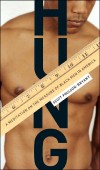 4. Hung: A Meditation on the Measure of Black Men in America by Scott Poulson-Bryant 4. Hung: A Meditation on the Measure of Black Men in America by Scott Poulson-Bryant
Does size matter if you’re Black? This is the issue exhaustively explored by Scott Poulson-Bryant, founder of Vibe Magazine. Surprisingly, he asserts that the obsession is primarily a male concern, "Because, for so many men, it’s the very definition of not only who they are, but why and where they are… Men measure. Bigger is better."
As proof, in a revealing chapter entitled Hip-Hop Hooray, he likens gangsta videos to porn movies but with a glaring difference. He contends that one reason for all the misogyny in the music has to do with the rise in 1992 of what he refers to as the "Homo Thug." Apparently, gay gangstas won’t come out of the closet for fear of alienating their fan base, given their ultra-macho personas.
Hung does mix in some historical evidence of the development of the Black man as stud stereotype, but ultimately he only convinced this critic that his own interactions with the world are substantially defined by proof of genital prowess.
Editor’s note: This article originally appeared on AALBC.com.
|